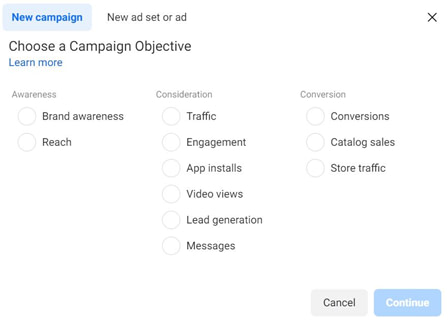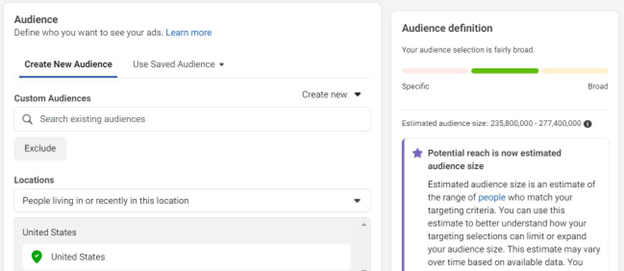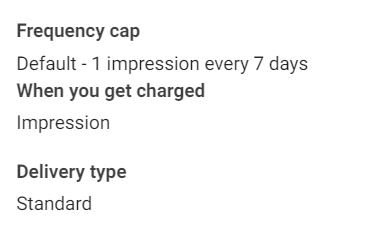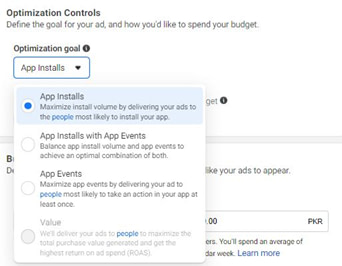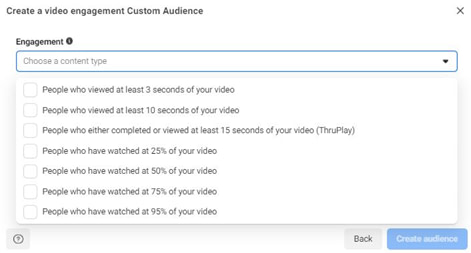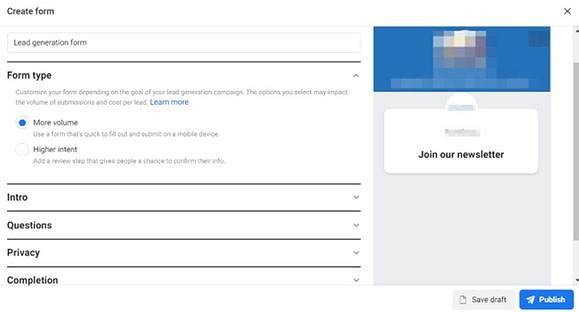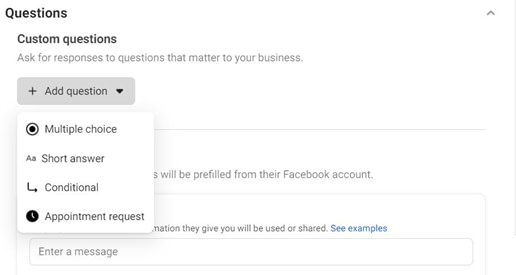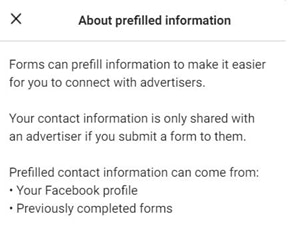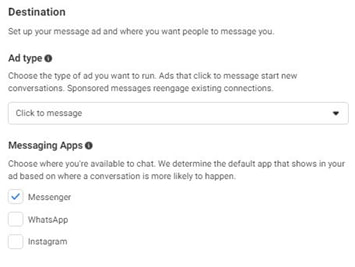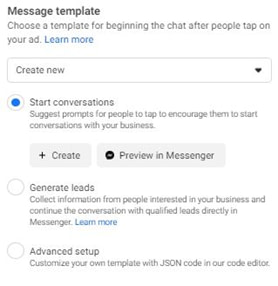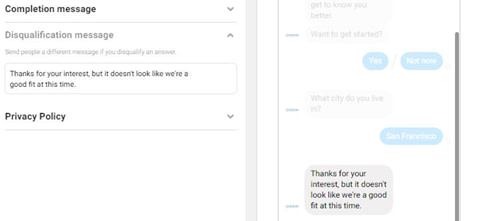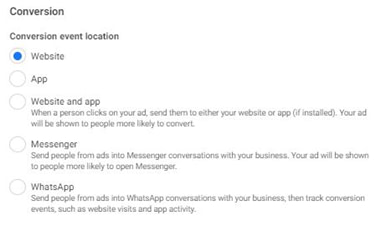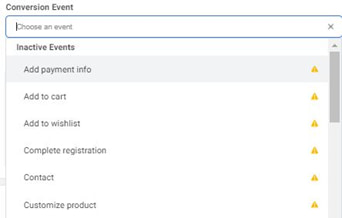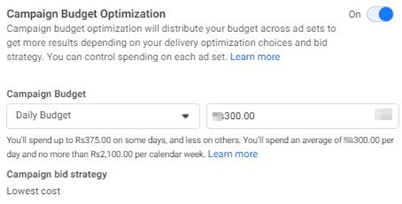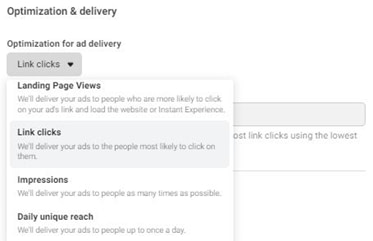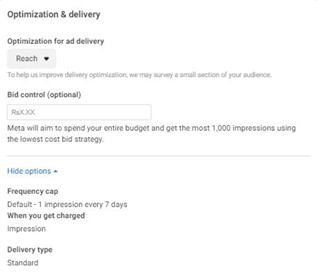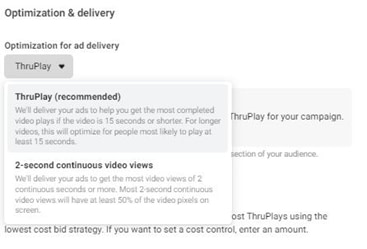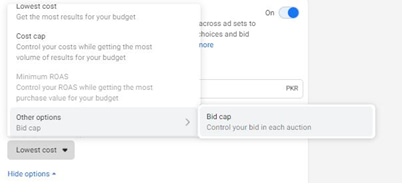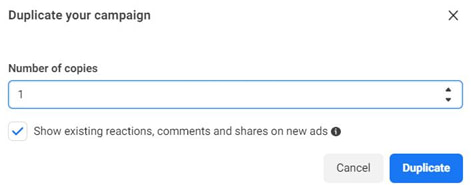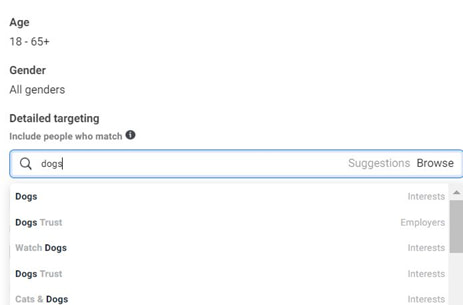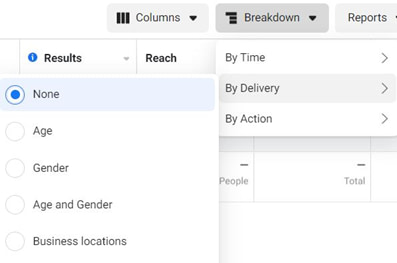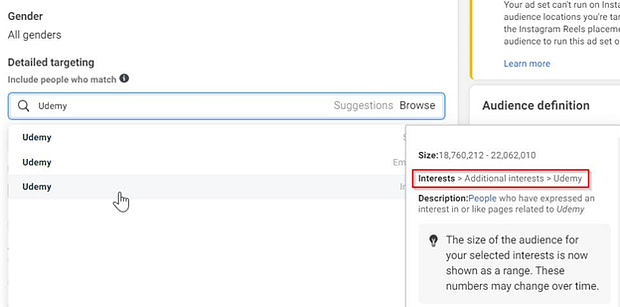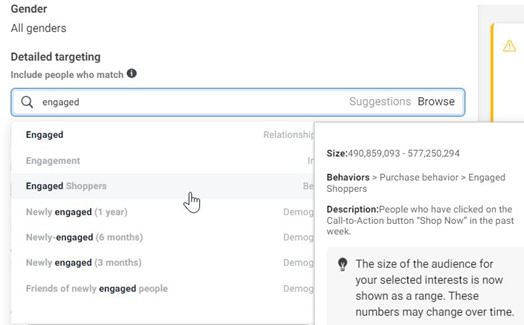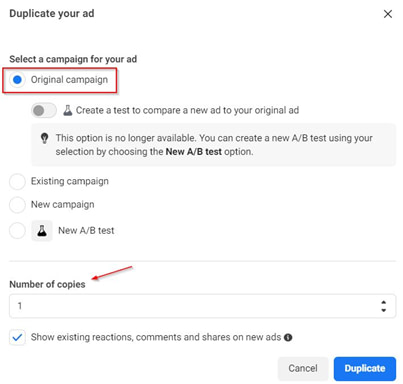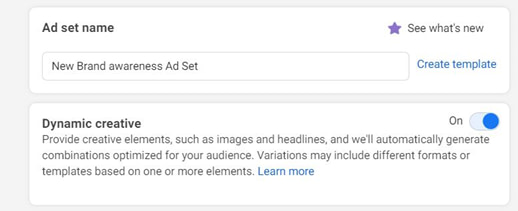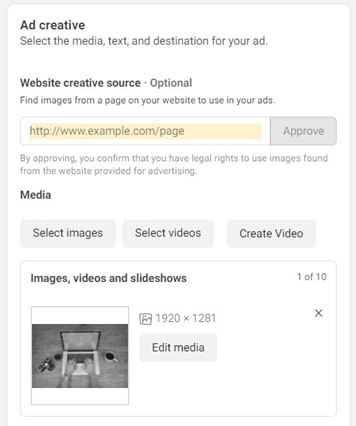Facebook ads should be an important part of your digital marketing strategy. Why? Because the social platform hosts a gigantic 2.91 billion active users.
So, it’s fair to say that a major chunk of your target audience is hanging out on Facebook. This also means that Facebook has a lot of data to help you get in front of your dream customers.
However, Facebook advertising isn’t as straightforward as it might seem. In order to make it profitable, you need to learn how it works and implement the right strategies.
In this in-depth guide, you’ll know everything you need to know about running profitable Facebook ads, even if you are a complete beginner.
By the end, you’ll be able to confidently call yourself a Facebook expert.
Let’s dive in.
What are Facebook Ads?
You most probably know what Facebook ads are, but let’s do a quick refresher.
Facebook ads provide you with the tools and data to get in front of your target audience. The social ad platform does most of the heavy lifting for you.
But, of course, you need to implement the right strategies to make it work for your business. We’ll talk about all that in the next sections.
Let’s first see why you should be using Facebook ads for your business.
Why Use Facebook Ads?
Greater Reach
The number one reason to use Facebook ads is its gigantic active userbase.
Facebook is easily the most popular social platform out there.
So, by using Facebook ads, you can reach a lot of people online.
Detailed Targeting Facebook Ads
When someone signs up for a Facebook account, they give away their personal and professional information.
Facebook uses that information to help businesses like yours get in front of those users.
As a result, you can market your brand to a very specific group of people based on several factors, including:
- Age
- Gender
- Location
- Language
- Job title
- Income
- Behavior
- Recent purchases
- Life events
- Education level
- Interests
That’s detailed targeting. It’s typically used in narrow audience Facebook ads. Generally, the narrower your audience, the more likely they are to convert.
A/B Testing Facebook Ads
A/B testing is when you test different variations of an ad to land on the most converting one.
With Facebook split testing, you can create multiple variations of a single ad, analyze them, and identify the winning ones.
For instance, you could target two different age groups and see which one responds better. This eventually helps you get the highest ROI for your ad spend.
We’ll do a deep dive into Facebook ads A/B testing later.
That was just the tip of the iceberg; there are a lot more benefits of Facebook ads, but these should be enough to pique your interest.
Before we take a deep dive into how to create a Facebook ad, let’s see what it looks like on the back-end.
Anatomy of a Facebook Ad
A Facebook ad typically consists of five components. Each of these components plays its part in making a Facebook ad successful.
Primary Text
Since the primary text is the first thing a user sees in a Facebook ad, it needs to be attention-grabbing. According to Facebook, the optimal primary text length for most ad placements is 125 characters.
Creative (Images, Videos, etc.)
The next Facebook ad component a user sees is the ad creative. It’s the visual part of your ad and could be an image or a video. Ad creative your second chance to grab users’ attention and get them to take action.
Headline
Your Facebook ad’s headline should be short and crispy. The goal is to pique users’ interest and get them to read your call-to-action; you don’t want to give away the farm here.
Description
Description goes a little deeper than the headline, so if you think there’s something more your audience needs to know, include that in your description.
Call-to-Action
This is the part where you get your target audience to click on your ad. Your CTA should be actionable, short, and easy to comprehend.
Here are a few examples:
- Get in touch
- Learn more
- Shop now
- Install now
- And, more
With all that out of the way, let’s see how to create a Facebook ad from scratch.
How to Set Up Facebook Ads – Ultimate Guide (2022)
How to Create a Facebook Ads Account?
In order to start advertising on Facebook, you need an active Facebook ads account.
But, we want this guide to be only about the strategies and tactics you can’t learn anywhere else. So, if you don’t have a Facebook ads account yet, go through this guide from Facebook.
Facebook Ad Creation Levels
Now, we have three broad Facebook ad creation levels.
Campaigns
Campaigns are at the top of ad creation levels. A Facebook ad campaign can include multiple ad sets and ads under it.
At the campaign level, you’re supposed to select the objective of your ad/s.
For instance, if your goal is to attract more traffic to your web pages, the “Traffic” objective under “Consideration” would be the right option.
Or, maybe you want to generate more sales on your e-commerce store? If so, you’d want to use a conversion objective like catalog sales.
Ad Sets
On the second Facebook ad creation level are ad sets. You can create multiple ads under a single ad set, which makes them great for split testing.
Moreover, a Facebook ad set lets you set your variables like age, gender, interest, budget, placements, interests, and more.
You need to carefully select your variables here if you want to move in the right direction. For instance, a smaller audience selection generally means higher ad costs. Whereas, broader audience selection typically costs less.
Lastly, Facebook ad sets allow you to split test multiple variables and land on the best-performing ones.
Ads
On the last ad creation level are Facebook ads. We’ve talked about the anatomy of a Facebook ad before, so you should have a good idea by now.
An ad essentially consists of:
- Your copy (Primary text, headline, CTA, and description)
- Your creative (Images, videos)
You can create multiple ads in a single ad set and split-test the above variables.
Facebook Campaign Objectives
Let’s take a look at every Facebook ad campaign objective briefly.
1. Brand Awareness
Facebook’s brand awareness campaign helps you get in front of the people that are more likely to remember or recall your brand.
Your target customer needs at least 7 touchpoints before they are ready to purchase from you. A brand awareness campaign acts as a touchpoint.
Of course, you don’t want to sell anything using this campaign objective.
- Ideal platforms: Facebook, Instagram, Messenger
- Ideal creative: Image/video/slideshow/carousel
Here are some tips for Facebook brand awareness campaigns:
- Keep your audience broad because this is a top-of-funnel (TOF) campaign
- Use automatic placements (Facebook optimizes your ad placement for best results)
- Make sure your site is mobile-friendly for Facebook ads
- Video content works great for brand awareness
2. Reach
Facebook’s “Reach” objective helps you put your business in front of maximum eyeballs.
For instance, you could target everyone living within a certain distance of your business’s physical location.
Just make sure you use the “Frequency Cap” feature to limit the number of times someone sees your ad.
3. Traffic
Next up, we have the traffic campaign objective. The name of the campaign says it all; it helps you drive traffic to your web pages.
You can always test different ad sets on the campaign level.
Note: For ad set split testing, always test one variable at a time (important).
For instance, creating duplicate ad sets with varying age ranges.
We’ll dive into split testing later.
4. Engagement
As the name suggests, an engagement campaign helps you engage your audience on Facebook rather than taking them off the platform.
Boosting your existing Facebook post is an effective way to do that.
Create Lookalike Audience in Facebook Ads
An impactful way of increasing engagement on your posts is by putting it in front of lookalike audiences.
One obvious lookalike audience would be people who are similar to the ones that already like your page.
Once you create this custom audience, you can set its size. 1% similarity or lookalike means Facebook will try to engage people most similar to your Facebook page likes.
So, naturally, the size of a 1% audience would be the smallest.
As you increase this percentage, your lookalike audience broadens, but its relevance decreases.
So, ideally, you want to target a 1% lookalike audience.
You can also target your competitor’s pages with engagement Facebook ads objective.
You won’t have to create a custom audience for this one.
Just go to the detailed targeting section of your ad set and select your competitor’s page.
For instance, let’s say you are trying to get engagement from people that are interested in online education.
You could target people that like Udemy and Skillshare.
Did you know 90% of your Facebook page followers don’t even see your new posts?
That’s exactly why your posts don’t generate enough engagement even though you have a good following.
Fortunately, you can get in front of your page followers using the engagement objective.
Just create a new custom audience targeting your current Facebook page followers.
5. App Installs
The app installs objective helps you put your app in front of relevant people and get more downloads.
However, you need to set up Facebook SDK in order to use the app installs objective.
6. Video Views
The video views objective is ideal for brands trying to reach cold audiences and build their brand recall/awareness. A video that talks about your brand can be a perfect touchpoint for your target audience.
You can then retarget a custom audience of people that have seen a certain percentage of your video. Simply, create a new custom audience and select “Video” on the pop-up.
Generally, the longer someone watches your video, the closer they are to converting in the buying cycle.
7. Lead Generation
Here is how Google defines a lead:
Lead generation is a process where you attract prospects to your business and keep nurturing them to drive a particular action.
Facebook’s “Lead Generation” campaign objective helps you do exactly that.
One of the most important aspects of a Facebook lead generation ad is the contact form.
You can also use other lead generation methods like “Automated chat” or “Calls”.
An instant form automatically collects valuable information about your prospects, converting them into leads.
So, after filling out other necessary details like your audience, budget, and placements, you’d be filling out an instant form.
Here’s what a Facebook lead generation form looks like:
Note that there are two types of instant forms. If you want to gather as many leads as possible, select the “More volume type”.
Whereas, if you only want to attract high-quality leads, choose the “Higher intent” type.
On the higher intent type instant form, Facebook just adds a review step to filter out low-quality leads.
Moreover, you can ask questions in your lead form in different formats.
Remember: Our attention spans are pretty short, so you don’t want to add irrelevant, difficult, or long questions in your instant form.
Add easy and quick to answer questions when they are necessary.
Here’s a cool thing: Facebook uses “Prefilled information” to make the process easier for your prospects.
So, after clicking on the “Enter your email” box, your prospects can enter their email address with just a click of a button.
8. Messages
The “Messages” ad campaign objective is ideal for e-commerce conversions.
Moreover, you can use this campaign objective in tandem with the Facebook Pixel to retarget abandoned carts.
Research suggests that 7 out of 10 shoppers (roughly) don’t go through with the purchase.
That’s 70% of your prospects that can be your customers if you retarget them properly.
Once you start creating your messages campaign, you’d have to select the ad type.
- “Click to message” ad type is used to engage new prospects
- Whereas, the “Sponsored messages” ad type helps you reengage existing users
Moreover, Facebook allows you to redirect your audience to Messenger, WhatsApp, or Instagram, wherever you want to chat with your prospects.
Let’s say you selected Messenger.
Now, you have three options from here:
- Start conversations
- Generate leads
- Customize your own template with Facebook’s code editor
To start conversations, you can create a template and set up automated messages in the inbox.
Or, you can add a button and send users to an outside link, say your website.
Or, you can collect information and continue your inbox conversation with the qualified leads.
The nice thing is you can add a disqualifying message in your thread to filter out low-quality leads.
9. Conversions
Facebook conversions campaign objective gives you five options.
You can choose any one depending on your goals.
But, how do you know when someone takes the desired action on your site?
You install the Facebook pixel on your site and let Facebook track conversion events.
Now, a conversion event depends on how you define it.
There’s a list of conversion events you can track on your site via Facebook ads.
10. Catalog Sales
The Catalog Sales campaign objective is exactly how it sounds. It helps advertisers generate more sales for their online stores.
It’s recommended that you use carousel ads if you have multiple products to sell.
This allows you to get multiple products in front of the right audience cost-effectively.
11. Store Traffic
Have a physical store that could use some traffic? The Store Traffic objective is for you.
You can use it to promote your business in a specific area and increase foot traffic to it.
That was all about Facebook ad campaign types. Let’s now talk about how you can budget your Facebook ads the right way.
Facebook Ads: Budget and Schedules
How to Budget Your Facebook Ads?
Now, there are essentially two ways you can set your Facebook ad budget.
At the Campaign Budget Optimization (CBO) level.
On every ad set manually.
Understandably, both have their merits and demerits.
At the CBO level, you don’t have as much control over your spending.
Facebook automatically distributes your budget across different ad sets.
Whereas, manual budget allocation to different ad sets can lead to audience overlap and wasted spending.
So, you’ll have to manually exclude your audience at the ad set level to avoid audience overlap.
Moreover, there are two types of budgets.
- Daily
- Lifetime
The daily budget type is often used while split testing different ad sets/ads.
Whereas, a lifetime budget is ideal when you are sure about your target audience and other variables.
Facebook AD scheduling
Ad scheduling only works with lifetime budgets, when you don’t want to split-test and have a winning audience to target.
Moreover, it’s ideal for when you’re targeting a specific time zone or your business’s opening hours.
Keep in mind that your Facebook ads can be shown either in your time zone or your target audience’s time zone.
Optimization for Ad Delivery
Facebook lets you choose how your ad is delivered to your audience.
But, ideally, you want Facebook to do its thing and leave the delivery option to default.
On the traffic campaign objective, you can choose from the following four options.
Similarly, on the reach objective, you can put a cap on how many times your ad is shown to a person.
This is known as a frequency cap.
The frequency cap is the minimum number of days before someone sees your ad again.
On the video views campaign objective, the default ad delivery is set to “Thruplay”, which means you only pay for ads when your video ad is played to completion.
“ThruPlay” is when Facebook promotes your video ad to people that are most likely to watch the whole video.
However, your videos need to be shorter or equal to 15 seconds.
If your video is longer than that, Facebook will deliver it to the audience that’s most likely going to play it for at least 15 seconds.
However, if your ad account is new, you’ll get charged for impressions only.
An impression is counted whenever your ad is served to a user.
The “Thruplay” option is disabled for new accounts.
For the “Conversion” campaign objective, the default ad delivery setting is:
7 days after clicking or 1 day after viewing means Facebook will show your ad to people likely to convert either:
- After viewing your ad on the same day
- Or, 7 days after clicking on it
Again, you want to leave the ad delivery settings on default unless you feel you can get better results by tweaking it.
Facebook Ad Bidding
Facebook ad bidding is when advertisers bid for their ad to be shown to a target audience and in different ad placement locations.
While your bid amount plays an important role, your ad’s success also depends on its overall quality and relevance.
By default, the Facebook ads bidding is set to “Lowest cost”. This means Facebook will try to achieve your goal at the lowest cost.
You can, however, tweak your Facebook ad bidding strategy.
You can set a “Cost cap”, which means your ad will appear in auctions with bids around that cost.
Another option is to set a “Bid Cap”, which is more rigid than a cost cap.
A bid cap essentially means that you don’t want Facebook to show your ad in auctions greater than the bid amount.
That said, it’s a good idea to keep the bidding strategy to the “Lowest cost” and let Facebook do its thing.
Manual bidding can be tricky, unless, of course, you know your CPA (cost per action).
Facebook Ads Split Testing– Complete Guide
Facebook split testing (or A/B testing) lets you compare different variations of your ad to land on the best-performing one.
Here’s an important thing to keep in mind while split-testing your ad: Always split-test a single variable!
For instance, target two different age groups.
Testing more than one variable won’t give you the clarity you need to move in the right direction.
Let’s dive into the Facebook split-testing process to understand it better.
Split-Testing at the Ad Sets Level
Remember: While split-testing ad sets, your ad campaign remains the same.
So, your main ad campaign will act as the foundation.
Duplicate Ad Sets
Now, one way to go about split testing at the ad set level is by manually duplicating them.
Just create an ad campaign as you’d normally do; it could be anything from brand awareness to store traffic.
Then, go to the ad set level, check the box in front of the ad set, and click “Duplicate”.
Create a single copy for now.
Next, adjust the variable you want to test on both ad sets.
Let’s say we create two identical ad sets and tweak the interests a little bit.
Example 1: Audiences with Two Different Interests
So, for the first ad set, we select dog lovers. Whereas, we target cat lovers in the second ad set.
Here’s how you set “Dogs” as an interest in a Facebook ad set.
Detailed targeting > Interests > Hobbies & interests > Pets > Dogs
Similarly, on the second ad set, select “Cats” as the interest of your target audience.
But, how do you know which ad set performs better?
By tracking conversions after 1000 impressions or 3 – 5 days.
Again: Split-test a single variable at a Time
Example 2: People of Different Ages with the same interest
Let’s take another example:
You can break the cat-lovers down into two ad sets and see which one performs better.
For instance, an audience of cat-lovers from age 22 to 28 and an audience of cat lovers from the age 28 to 34.
Remember, we’re only testing one variable at a time, i.e., “Age”.
There are tons of possibilities with Facebook ads; you just have to put your creative cap on.
You’ve learned how to split-test on the ad set level, but what about the ad level.
You can do that by creating multiple ads and testing one variable, for instance, the headline.
Pro tip: Always name your ad sets in a way that makes it easy for you to identify its target audience later.
For instance, “18 – 24, US, Men”.
Track Your Results
To track the above Facebook ad example, you can go to:
The Breakdown Menu > By Delivery > Age & Gender.
Check the results for conversions and identify the winner.
A conversion event for you can be anything from an impression to a sale.
How Long Should You Split-Test?
Facebook allows you to split-test your ads at three levels: Campaign objectives, ad sets, and ads.
Again, make sure you only test one variable at a time.
But, no matter the split-test level, you need to track your results at some point, right?
After all, you don’t want the non-performing ads to hurt your marketing budget.
So, track your results after 1000 impressions or 3 – 5 days, whichever comes first.
By now, you’d have your winning ad set or ad for different variables.
What you can do is: Combine all the winning variables and test them further. You’ll keep on improving your ROI that way.
Split-Testing Technique for Limited Budget
Manual split-testing gives you great control over your ads, but the process can prove to be expensive.
And, you might not have enough budget to spend on testing tens of ad sets at a time.
So, let’s get creative and devise a split-testing strategy for businesses with a limited ad budget.
What you can do is set a lifetime budget at the CBO (Campaign budget optimization) level.
For instance, 30 ad sets with 30 different variables for $30 lifetime budget. Every ad set gets a $1 daily ad budget.
Facebook will then automatically distribute your budget across all these ad sets and help you identify the winners.
How to Find New Potential Audiences for Split-Testing
You can create a highly-converting ad, but it’s of no use if you don’t put it in front of the right audience.
Fortunately, Facebook’s detailed targeting feature lets you target very specific audiences.
Target Competitors’ Audiences
For instance, you can show your ads to competitors’ audiences.
Just search your competitor’s page in the “Interest” option.
Let’s say you are selling a course and want to reach new audiences.
You could search “Udemy” and then click the page likes option. The platform also tells you what other pages your competitors’ audience likes or follows.
Facebook Page Insights
“Page Insights” can help you learn more about your potential audiences.
Just go to your page > Insights > People.
As you can see, a majority of the audience on the above page comes from a single country.
Plus, the page is more popular among men.
This way, you can identify what’s working for you and focus your resources on that.
Engaged Shoppers
A powerful way to drive conversions is by using the “Engaged Shoppers” option under detailed targeting.
This single strategy can help you improve your conversions, and in turn, ROI.
Custom Audiences in Facebook
When it comes to Facebook custom audiences, the possibilities are endless.
For instance, you can create and target a custom audience of your website’s top 25% visitors.
Or, you can get in front of prospects that added your product to their cart but didn’t go through with the purchase (Add to cart option).
Maybe, you want to promote your product to a group of people who’ve watched your video?
Split-Testing at the Ad Level (Manual)
There are basically two ways you can split-test your Facebook ads:
- Manually creating multiple ads
- Through dynamic creative
Again, remember to test only one variable per ad.
To manually test your ad variables, you’d first need to create your campaign.
Then, duplicate the ad in that existing campaign.
Choose the existing campaign and the number of copies you want to create.
You can split-test:
- Images
- Headlines
- Primary text
- CTA
For instance, after duplicating an ad, just change the image and track the results for both ads after 1000 impressions.
Or, if you want to test your headline, just change the headline on the copied ad and see which one performs better.
Track Results
After a set period of time or 1000 ad impressions, observe each ad variation to identify the winning one.
Split-Testing at the Ad Level (Automatic/Dynamic Creative)
Facebook’s Dynamic Creative feature lets you test multiple ad variables automatically.
So, you can submit multiple images, headlines, CTAs, and primary texts and the algorithm will test them for you.
Remember: Dynamic Creative isn’t available on every campaign type.
For instance, you can use the feature on a “Brand awareness” campaign objective.
After creating the campaign, just toggle ON the Dynamic Creative option.
You can then submit multiple ad creatives and texts and let the algorithm test the variations.
To track your Dynamic creative ads, you just need to go to “Ads” > “Breakdown” > “By Dynamic Creative Element”.
Don’t forget to toggle ON the “Optimize Creative for Each Person” option.
Split-Testing Best Practices
Here are a few best practices for Facebook split testing:
- Always test one variable at a time
- Your audience should be big enough to give you adequate data
- Test an ad for 4 days on average (or 1000 impressions)
- Budget your split-tests properly
With split-testing out of the way, let’s now talk about how you should be planning your Facebook campaigns.
How to Plan Your Facebook Campaigns?
One of the most important questions beginner advertisers ask is, “What campaign should I create?”.
The question makes a lot of sense, but the answer isn’t straightforward.
Find Your Daily Ad Spend
First, you need to ask yourself, “What’s my daily ad spend budget?”.
Here’s how you calculate your daily ad budget: 10 X CPA (Cost per action).
Where your CPA = Ad Spend/No. of Conversions.
So, for instance, let’s say your overall ad spend is $200 and your total number of conversions is 20.
Your CPA would be $10 ($200/20).
As a result, your daily budget would turn out to be 10 X $10 = $100.
Finding Your CPA
Your net profit can be your cost per action.
Let’s see how. Let’s say your per-order expense is $800 and you get a profit of $750 per order.
Your net profit, in that case, would turn out to be $50.
So, $50 is your break-even; you can afford to spend 50 bucks to generate a single order.
As a result, you should be optimizing your ads to get a CPA of $50 or less.
Your daily budget, in that case, would be 10 X $50 = $500.
That’s enough mathematics for now; let’s move on.
Distribute Your Budget
Now, you can divide your target audience into three parts:
- Top of the Funnel (TOF)
- Middle of the Funnel (MOF)
- Bottom of the Funnel (BOF)
The TOF audience is the broadest.
The MOF audience is narrower than the TOF audience (Warm audience).
Whereas, the BOF audience is the narrowest and is almost ready to take action (Hot audience).
Therefore, it’s a good idea to divide your budget into three parts.
The recommended distribution is:
- TOF (20%)
- MOF (40%)
- BOF (40%)
Top of Funnel (TOF) Campaign
So, let’s say your daily ad budget is $500.
20% of that would go to the TOF audience: 20% of $500 = $100.
Now, you can target your TOF audience via different ad campaign objectives.
So, we’ll divide the TOF budget into further three parts:
- Traffic: $33
- Video views: $33
- Post engagement: $33
That’s not a rule, though; you can always adjust that percentage according to your needs.
For instance, get all of your TOF audience to click through to your landing page or blog (Traffic objective).
How to Allocate TOF Budget?
If you’re going the split-testing route, what you can do is:
Test 10 different ad sets at the campaign budget optimization (CBO) level.
So, for instance, if we have a $100 daily budget, we can allocate $10 to each ad set.
Note: Every ad set should have at least $1 as the daily budget.
Next, divide all those 10 ad sets into three parts.
- 6 ad sets targeting lookalike audiences of action takers
- 3 ad sets targeting a cold audience
- 1 ad set to target a very broad audience (18 – 65+ age, all genders, for instance)
Now, if you don’t yet have lookalike or custom audiences, 9 out of 10 ad sets should be targeting cold audiences.
Next, toggle off the losing ad sets and replace them with new ones.
Pro Tip: Use winning ad sets to create new lookalike audiences.
Best Look-Alike Audiences
- Visitors by time spent, for instance, top 25% (eliminates bouncers)
- Video engagement custom audience
- Website custom audiences (Add to cart, website visitors, initial checkout)
- Customers list (email subscribers)
Remember, you want to replace all your cold audiences with lookalike audiences eventually.
Best TOF Campaign: Post Engagement Ad
Ask yourself: Why do I need to run a conversion campaign and spend $1 – $5 when I can just use a post-engagement campaign to get a similar result with $0.25?
The point is when someone comments on your post, they become your lead.
A comment under a post = 1 Lead.
You can even create a custom audience of post engagers and retarget them later.
Here’s something interesting. Posts that already have engagement and social clout tend to provide better ROI with paid promotion.
Middle of Funnel (MOF) Campaign
The conversion objective is suitable for a middle-of-funnel campaign.
At this stage, you want to target warm prospects, so retargeting TOF audiences is a good idea.
Create multiple ad sets, say 3, on the CBO level with $1/day per ad set.
Each ad set should target a single TOF custom audience.
These can be people that have:
- Interacted with your video
- Visited your website
- Engaged with your post
How to Set MOF Campaign Budget?
For the MOF audience, create multiple ad sets with a mixture of lookalike and custom audiences, just as we did with the TOF campaign.
For instance, you can target a 1% lookalike audience of your TOF content (blog post traffic).
Bottom of Funnel (BOF) Campaign
The bottom of the funnel campaigns are for hot audiences. Prospects that are almost ready to take action. Facebook lets you target your BOF audience effectively through the “Add to cart” and “Initial checkout” features.
Your bottom-of-funnel campaign should get around 20% of your daily budget.
How to Allocate BOF Campaign?
You can divide your BOF campaign budget into the following sections:
- Video viewers
- Customer lists
- Add to carts
- Initial checkout
- MOF content views
- Website visitors
- Post engagers
What’s Buyer Retargeting?
Since your past customers are your asset, you should allocate a certain portion of your daily budget to them, say 10%.
The goal here is to maximize your customers’ LTV (lifetime value).
But, here’s a question: Why should you retarget your customers with Facebook ads instead of email marketing?
Since email open rates are generally low, Facebook retargeting ads offer a much better reach.
Buyer Retargeting Strategy
Here’s a creative buyer retargeting strategy you might like.
Create a custom audience of buyers who’ve purchased your product in the last 30 – 60 days.
It’s important to give a customer enough time to use your product before asking for a review/feedback.
This eliminates buyers that were unhappy or claimed a refund in the 30-day post-purchase period.
Next, announce an attractive giveaway for one lucky customer.
Ask your target audience to create a short video with your product to participate in the giveaway.
That way, you’ll be able to get a lot of user-generated content to use as testimonials to attract new audiences.
Pro Tip: Create a new custom audience of customers that have purchased from you more than once or spent a particular amount. This could be the VIP audience that you can retarget.
Ad Creative/Copy for TOF Campaigns
Your TOF audience is unaware of your product, so you need to attract them by stating their problem and giving them a solution (your product).
You want to create a traffic objective and attract as many prospects to your website as possible.
Remember, your TOF audience is the broadest. It narrows down as you move towards MOF and BOF campaigns.
Ad Creative/Copy for MOF Campaigns
On a MOF campaign, your prospects know that you have a solution for them, but they are not sure about it.
Your ad copy should address their objections in a MOF ad.
Tell them why your product is worth their buck.
Offer a money-back guarantee, use the fear of missing out (FOMO), and showcase testimonials.
At this stage, you want to minimize the friction in the buying process.
Of course, you can always split-test your ad copy to land on the best-converting one. (Remember the one-variable rule).
Ad Creative/Copy for BOF Campaigns
This is where you get to target a hot audience that’s almost ready to act. User-generated content like positive testimonials is king for this.
At this stage, most of your potential customers just need a push. And a positive review about your product or service does the trick.
Note: Keep split-testing your ad sets, ad copy, and ad creative until you land on a perfect combination.
Types of Facebook Ads (Format)
Single Image Facebook Ads
The ad creative on a single image Facebook ad is a simple image. It’s probably the most common ad we see today.
Single Video Facebook Ads
Single video Facebook ads have a simple video as the ad creative. They are great for grabbing attention and building brand awareness.
Carousel Facebook Ads
Carousel Facebook ads are basically a combination of images put together. They are great for showing multiple products in a single ad.
Collection Ads
Collection ads are suitable for e-commerce businesses that want to bring people directly to their online store.
Slideshow Ads
A slideshow ad is when you put together multiple images in a video. It combines the power of images and a video to help you achieve your advertising goals.
Google Ads VS Facebook Ads Cost
The cost of advertising can vary a lot depending on your industry and goals.
Google ads are more geared towards conversions whereas businesses typically use Facebook ads to build brand awareness.
So, naturally, Google ads look more costly on the outside.
But, that doesn’t mean they have to be any less “cost-effective” than Facebook ads.
See, users on Google are already looking for a business like yours, so it’s easier to convert them.
Whereas, Facebook is a social platform where people generally don’t go for answers or to buy stuff.
Benefits of Facebook Ads
Here’s a quick look at the benefits of Facebook ads:
- Wider audiences
- Powerful targeting features
- Competitor targeting
- Variety of ad formats
- Effective lead generation
- Measurable performance
- And, much more
IOS 14 Facebook Ads Changes
Apple has recently released changes with its iOS 14 version that impacts Facebook data collection and advertising.
It requires that advertisers show a prompt on iOS 14.5 or later devices if they want to collect their data, which limits ad personalization and performance reporting.
Instagram Ads VS Facebook Ads
Probably the only difference between Instagram ads and Facebook ads is the variety of formats.
Facebook owns Instagram, so you can put the same ad on both platforms at a time.
However, the audiences on both platforms can be different.
Moreover, the CPC (cost per click) of Instagram ads tends to be a little higher than that of Facebook ads.
How to Optimize Facebook Ads for Conversions?
Done right, Facebook advertising can be incredibly powerful for your brand. But, you do need to optimize your Facebook ads if you want them to generate enough conversions for your business.
Here are a few tips on optimizing a Facebook ad for maximum conversions:
- Have clear goals
- Choose the right campaign objective
- Leverage Facebook Pixel
- Boost your existing posts wisely
- Target custom and lookalike audiences
- Trust Facebook’s algorithm
- Research your competition
- Split-test everything
- Retarget buyers and prospects
Facebook Ads: Frequently Asked Questions
How Much Do Facebook Ads Cost?
The ultimate cost of Facebook ads depends on:
- The size of the audience
- Campaign objective
- Your daily/lifetime budget
- Ad placement
- Ad quality
- Industry
- Ad bid
Since there are so many variables that affect the cost of Facebook ads, it’s not possible to give a general estimate.
What is Landing Page Facebook Ads
Landing page Facebook ads help you drive traffic to your web pages. They are pretty helpful when you are trying to track your website traffic, retarget them, and build an audience.
What are Dynamic Facebook Ads?
Dynamic Facebook ads are typically used to target e-commerce prospects. You can use them to automatically target prospects that show interest in a particular product on your catalog.
To use Dynamic Facebook ads, you’ll just have to select the “Catalogue Sales Objective”.
What are Instream Facebook Ads?
Facebook owns Instagram, so you can run ads on Instagram through the Facebook ads manager.
You can use the same ad creative for both platforms or make it unique for each.
What are Lead Facebook Ads?
Lead Facebook ads are used to gather prospects’ data through a lead generation form. As soon as someone gives out their contact details, they become your lead.
How Do Retargeting Facebook Ads Work?
Retargeting Facebook ads let you get in front of people that already have communicated with your business.
For instance, you can use retargeting Facebook ads to connect to your website visitors, video viewers, and more.
How to Use Facebook Pixel Ads?
Facebook Pixel ads help you retarget your website visitors by tracking them. To use them, you’ll first need to install the Facebook Pixel on your website.
There are essentially two ways to install the Facebook Pixel on a site:
- Using the plugin
- By working with a developer
Are Facebook Ads Worth It?
Yes, Facebook ads are completely worth it because they help you put your business in front of a highly targeted group of people cost-effectively.
Do Facebook Ads Work?
Yes, Facebook ads do work because the ads platform offers powerful targeting features. Businesses of all types and sizes all around the globe have been using Facebook ads successfully. But, of course, you do need to have the right skills to make them work for you.
Are Facebook Ads Effective?
Yes, Facebook ads are pretty effective since the social media platform has actionable user data to help you target the right people.
Are Facebook Ads Expensive?
Yes and no. Facebook ads can be pretty expensive if you let them. This means there are quite a few factors that determine the cost of your Facebook ad.
But, generally, if you’re targeting the right audience and checking all other optimization boxes, Facebook ads can get you a pretty high ROI.
Are Facebook Ads Pay Per Click?
Yes, Facebook ads are pay-per-click, which means you can get charged every time someone clicks on your ads. But, it also charges based on ad impressions, video views, and even more metrics.
What is ROAS for Facebook Ads?
ROAS (Return on ad spent) is the revenue you generate with a Facebook ad divided by the ad cost. For instance, let’s say you spend $50 on a Facebook ad and generate $100 with it.
Your ROAS, in that case, would be $100/$50 = $2.
What is a Good CTR for Facebook Ads?
The click-through rate of your Facebook ads can vary across different industries, but it should be around 0.90%.
How to Become a Facebook Ads Specialist?
The key to mastering any skill is continuous practice. Facebook ads are no exception. Here are the steps to becoming a Facebook ads expert:
- Start exploring
- Learn to use Facebook Business Manager
- Understand Facebook’s sales funnel
- Practice split-testing
- Learn to create custom and lookalike audiences
- Help businesses run ads
Can You Earn Money from Facebook Ads?
Yes, you can earn money from Facebook ads, and a lot of it. The only condition is that you become really good at them.
Once you have a good grip, you can offer your skill as a service to other businesses. You can also use Facebook ads to sell your own products through an e-commerce store. Or, you can bring prospects to your website and sell them anything. The possibilities are endless.
How to Disable Comments on Facebook Ads?
Although Facebook doesn’t allow you to turn off Facebook ads comments, there is a way to do that: Turn off comments using moderation.
But, keep in mind that the method will turn off comments for all your Facebook posts and ads.
You’ll just have to add symbols like “.”, “,”, and words like “You”, and “to” to the forbidden keyword list. This little trick will prevent users from commenting on your Facebook ads.
Final Thoughts
Thank you for reading this in-depth Facebook advertising guide.
If you’ve read this far, you have everything you need to start running Facebook ads profitably.
Have any questions or comments related to Facebook advertising? Please do let us know in the comments section.


